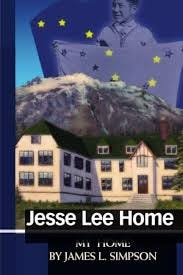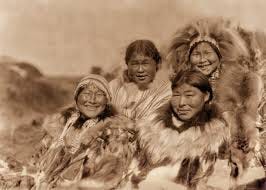Why we Alaska Native Peoples Remember What the CDC Protects us From
A history of smallpox, tuberculosis, and hepatitis in Alaksa
Why We in Alaska Remember
When Robert F. Kennedy Jr. claims America is “the sickest country in the world” and fires the scientists who safeguard us, I hear those words differently than most. I hear them through the memories of my family—and the memory of my people.
A Living Memory of Disease
I am an Alaska Native physician, Athabascan by heritage. For us, infectious disease is not a chapter in a history book. It is a lived memory.
Alaska was once filled with orphanages and boarding schools for Native children. They were necessary, because so many children lost their parents to infectious diseases. My father was raised in one of those orphanages, the Jesse Lee Home in Seward. He remembers classmates who never grew up—buried too soon by measles or tuberculosis. The photo above is the cover from my late father’s book (available on Amazon).
Children’s graves are not distant reminders for us. They are part of our landscape.
Our Early Encounters With Vaccination
Alaska Native people were among the first in North America to be vaccinated. The Russians, under Catherine the Great, brought variolation to Alaska in the 18th century, long before Jenner’s cowpox vaccine. They carried smallpox with them, but also their version of prevention.
Later, tuberculosis devastated our villages. By the 1940s, TB accounted for 20–30 percent of Alaska Native adult deaths, compared to just 2.6 percent among adults in the rest of the United States. Historic and ongoing social and economic disadvantages fueled that disparity.
TB was so catastrophic that The Journal of the American Medical Association declared it a public health disaster. Yet Alaska Native communities became the first where antibiotics were tested. Those trials saved our lives—and helped save countless others around the world. By 1950, TB mortality began to fall sharply thanks to public health interventions and new antimycobacterial drugs.
Hepatitis B and the CDC
In the 1970s, physicians noted a high incidence of hepatitis B among Alaska Native peoples from the Bethel region in Alaska. Hepatitis infection reached nearly 14 percent in some communities, with over half the population showing evidence of past infection. Children were especially vulnerable—not just to acute disease, but also to the liver cancer that chronic infection can bring.
The CDC came north. Beginning in the early 1980s, in partnership with Alaska Native health authorities, they launched one of the world’s most ambitious hepatitis B interventions: universal newborn vaccination, mass screening, and catch-up vaccination across villages.
The results were dramatic. In 1981, the rate of acute hepatitis B infection in Alaska Native children was 200 per 100,000. Today, it is less than 5 per 100,000. Since the mid-1990s, there have been no cases of liver cancer caused by hepatitis B in Native children.
The Alaska experience showed the world that universal vaccination could virtually eliminate this virus.
When you hear the anti-vaccination folks talking about how silly it is to have newborns immunized against hepatitis B, as was discovered in Alaska, most transmission did not come from mothers, but from other people taking care of the newborns.
My Work With the CDC
In the 1970s, when I trained as a young virologist, I worked directly with the CDC. Together, we collected samples for DNA studies of viruses and published research that added to global knowledge of DNA uses in viruses.
For us, the CDC has never been a faceless agency in Atlanta. It is here, in Alaska, working alongside us. It is part of our community.
Eventually, I realized I loved people more than Petri dishes, and I went to medical school to serve my community more directly. But I never forgot the lesson of those years: science saves lives.
Why We Don’t Hesitate
Many of my colleagues in the Lower 48 say vaccines are a victim of their own success—that people have forgotten the fear of epidemics. In Alaska, we never say that. The memories are too fresh.
I remember lining up as a child in Ketchikan for the polio vaccines. First came Jonas Salk’s injections. Later, Albert Sabin’s sugar cubes. The taste lingers, not for its sweetness, but for the relief: we knew we would not be paralyzed like the children before us.
When COVID-19 vaccines became available, Alaska Native people led the nation in uptake. We did not hesitate. We remembered.
The Danger of Forgetting
This is why it is so dangerous to dismiss science and dismantle the institutions that protect us. The CDC has been our shield. It was there to contain Ebola. It monitors TB. It tracks every case of malaria in the United States. These are not abstractions. They are the difference between life and death.
In Alaska, no one needs to be convinced of the value of vaccines or public health. We know. We remember. And we will not burn the books of science simply because their pages offend ideology.
When I hear Mr. Kennedy denounce the CDC, I think of the generations buried too soon, the families broken by disease, and the children—like my father’s classmates—who never grew up.
For us, public health is not bureaucracy. It is survival.
America’s true sickness is not too much science. It is too little memory.
✍️ About Yours Truly
Dr. Terry Simpson is a surgeon who lives in Ventura, California. Since 2003, he has served as treasurer of the Joint Operating Board of the Alaska Native Medical Center in Anchorage, and as a board member of Southcentral Foundation, the only two-time winner of the Malcolm Baldrige Award in healthcare.




